
About This Quiz
For truckers, the open road is their office and the place where they earn their living. And, just like in every other workplace, there are rules. While the people driving their four-wheeled vehicles alongside them on the highway have to follow the law, trucks are a special class of vehicles, and, as such, there are additional rules and regulations their drivers must follow. Do you think you know the difference those extra 14 wheels put on big-rig drivers in the eyes of the law?
While driving a truck can be a rewarding career, but there's also an inherent danger driving a vehicle that large — and not every driver is up to the task. A typical car might weigh 3,000 to 4,000 pounds; a fully-loaded semi-truck can weigh up to 80,000 pounds. Since truckers are responsible not only to deliver their cargo to its destination but to do so safely, extra training is required, and they must follow strict guidelines in their line of work. Also, after the September 11 attacks, new security policies were put into place to protect truckers and the rest of the public from terrorist activities.
This quiz will test your knowledge about the rules of the road when it comes to piloting a big rig across town, the state or the country. Do you think you know enough to keep your license, stay on the road and stay out of jail? Climb on up and let's see if you're big-rig material in the eyes of the law!

Driving a big rig requires truck drivers to be sharp, both for their own sake and for the safety of those around them. Federal law limits truckers to driving times of no more than 11 hours per day.
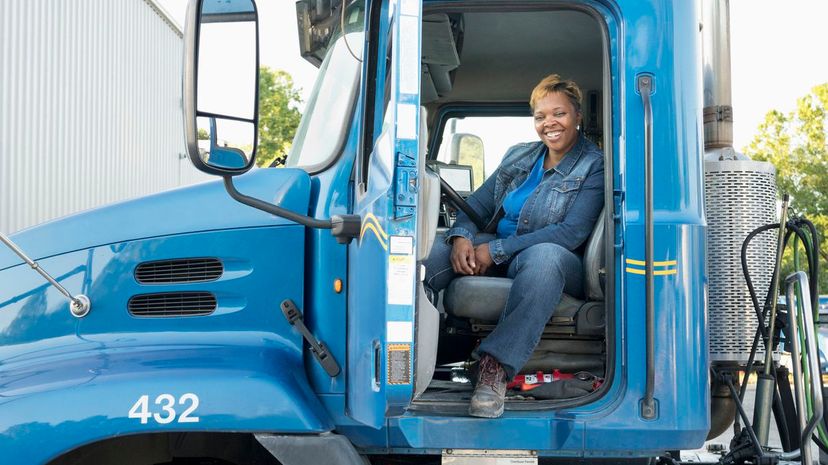
To operate a semi with a trailer, you'll need to earn a Class A Commercial Driver's License (CDL). A Class B CDL allows you to drive a large vehicle, such as a dump truck or large bus, while a Class C CDL permits you to drive a small bus or vehicle carrying 16 passengers or less.

Unless the weigh station is closed, in most states, a truck weighing more than 10,000 pounds must stop at all weigh stations along the path to their destination in most cases. Having to stop the truck cuts into the delivery time, but the law is there to keep both truckers and other travelers along the road safe.
Advertisement

There are nine classifications of hazardous materials when it comes to highway transportation. These include classifications for explosives (Class 1), flammable liquids (Class 3), radioactive materials (Class 7) and corrosive materials (Class 8), among others.

It is illegal for truck drivers to pick up hitchhikers or give any unauthorized passenger a ride. Commercial truck drivers are charged with safely operating their rigs, and a hitchhiker is considered a risk. Even if the truck isn't carrying hazardous materials, a truck could still cause a lot of mayhem if it fell into the wrong hands.

The current law in the United States is that a driver must be at least 21 years old to drive a big rig across state lines, although there is a bill in Congress pending that would allow drivers 18 to 20 to drive in the United States if they've had military training or have apprenticed with an experienced trucker.
Advertisement

Not every truck driver is allowed to carry what would be considered a hazardous material. To do so requires a special endorsement above the standard Class A commercial driver's license. This requires passing a special test and, since the September 11, 2001, terrorist attacks, drivers must be fingerprinted and undergo a background check to receive this endorsement.
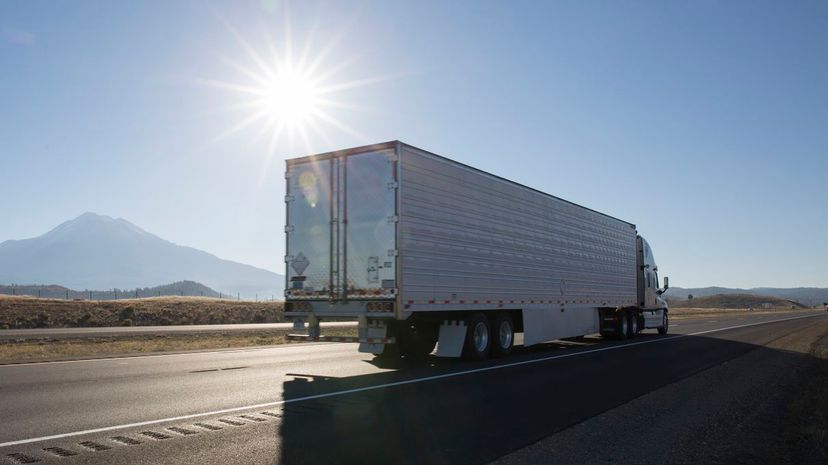
In case of an accident, first responders need to know at a glance what they are dealing with. Placards describing the load the truck is carrying must be placed at its front, rear and sides.

While they often can carry more weight — if they have an oversize or overweight permit — federal law limits a semi truck to carry no more than 80,000 pounds (or 36,000 kilograms). That breaks down to no more than 34,000 pounds per tandem axle and 20,000 pounds for a single axle.
Advertisement
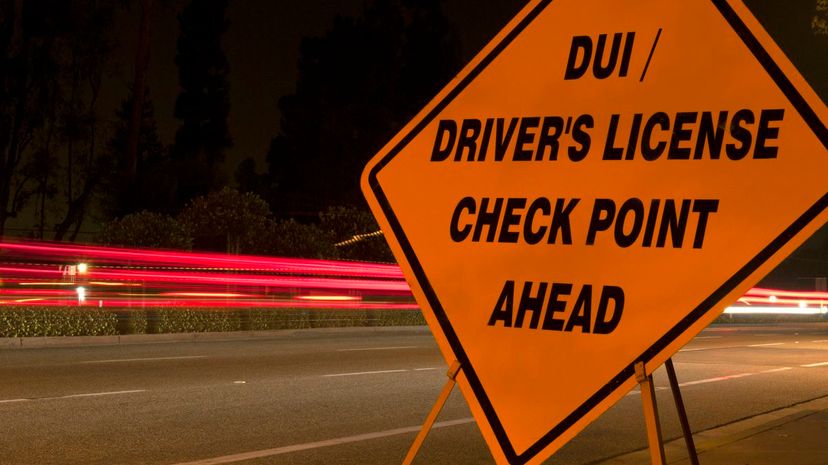
Being arrested for DUI can have added consequences to someone who makes their living as a truck driver. Not only can they be arrested for driving under the influence, but losing their CDL for a year means they can lose their livelihood and possibly destroy their career. Multiple offenses increase suspension times.

There is no federal law prohibiting a truck driver from carrying a weapon, but the driver must adhere to local and state laws. Many carriers, however, will not allow their drivers to have firearms in their rigs.

To help combat pollution, many states and areas are enacting laws that prohibit the idling of vehicles over a specified period of time. Many truckers say these laws unfair to them because they need to sleep in their vehicles for long periods of time and their engines must be running for their air conditioners or heaters to work, as well as the need to keep the engine and fuel tanks warm.
Advertisement
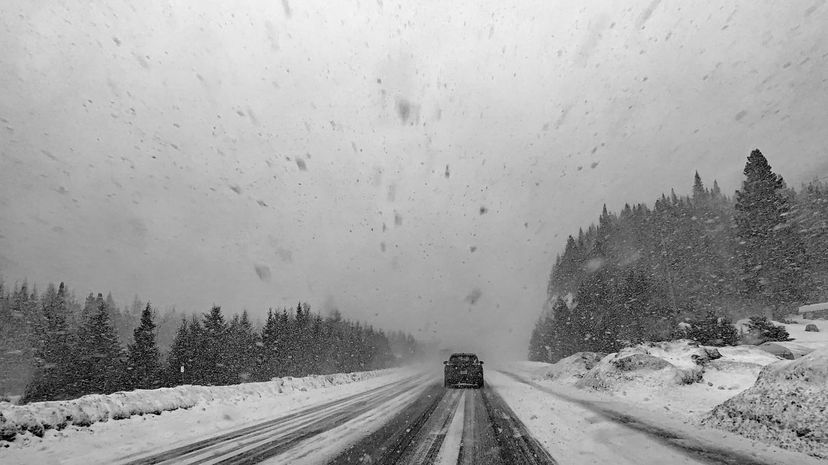
In extenuating circumstances — such as snow, traffic accidents, construction delays — a truck driver may extend his or her drive time by two hours thanks to the adverse driving conditions exception. After that, though, it's time to look for a place to park it and rest!

While there are federal laws regulating the operation of semitrucks, each state has its own laws. While most of these laws are uniform, there are differences. Colorado, for instance, only requires vehicles weighing more than 26,000 pounds to submit to weigh stations.

Truckers must keep an electronic logging device (ELD), an automatic logbook that keeps track of the miles a truck travels, how long a driver has been behind the wheel and how long a truck takes to reach its destination. Use of an ELD is now federally mandated.
Advertisement
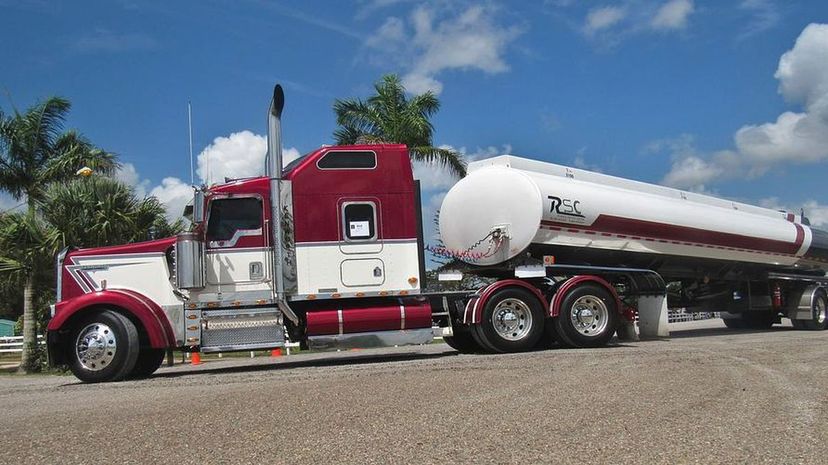
While truck drivers may be "on-duty" longer than they can legally drive at a stretch, federal law states that a driver cannot spend more than a combined 70 hours driving and on-duty in an eight-day period (or 60 hours in seven days).
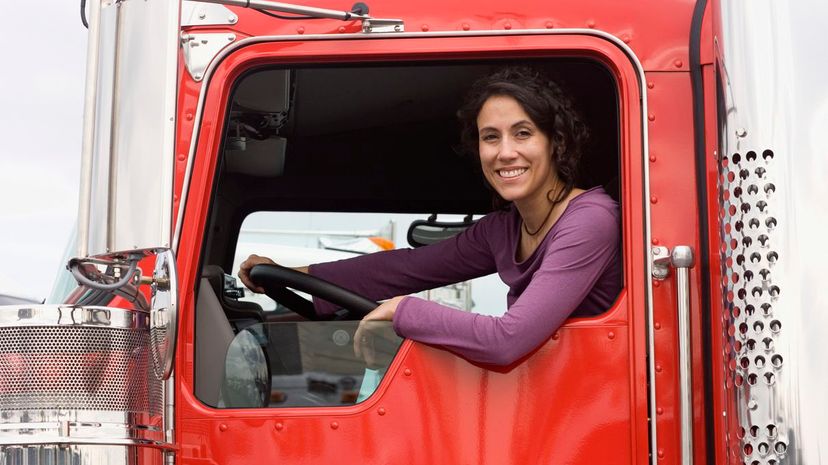
In order to get the certification you need to drive a big rig, you have to work up to it. You'll first need to earn a Class C commercial driver's license, and then you'll need to pass both a written and driving test before earning Class A certification.

According to the Bureau of Labor Statistics, there are 203,000 drivers over the age of 65 who hold a commercial driver's license. Drivers must regularly pass physical and health requirements to maintain their license, but there is no upper age limit.
Advertisement

There are 50 multiple-choice questions on the commercial driver's license test, and you'll have an hour to take the test. To pass it, you'll need to answer 80% or more of the questions correctly.

Radioactive loads — Class 7 hazardous materials — must display placards to communicate what the truck is carrying. Class 7 placards have the black radioactive symbol in a field of yellow in the upper half.

There is no national speed limit when it comes to semitrucks; each state can set its own limits depending on the safety requirements of particular stretches of road. There is talk, however, of a federal bill mandating trucks have speed limiters that would keep them below 65 mph.
Advertisement

Engine braking, also known as "jake braking," happens when the engine's valves are opened at the top of the compression stroke, using the engine to slow the vehicle. While this can save wear and tear on the braking system, it's also extremely loud, and it's illegal around residential areas. There will be signs warning drivers of this, so be on the lookout, Jake!

The Federal Motor Carrier Safety Administration (FMCSA) requires trucking companies to conduct random drug tests on drivers each year. In 2020, this rate was increased from 25% of their drivers to 50% because the positive rate in the previous year reached 1%, automatically triggering the higher rate.

In most states, a driver who blows .04% or higher in a breathalyzer is considered legally drunk and will face heavy penalties. It should be noted that some states have even stricter guidelines.
Advertisement

When a truck is carrying potentially explosive materials — considered a Class 1 hazardous material load — it must have orange placards stating so, along with a number detailing the type of explosive risk they carry (a Class 1.1 signals explosives that have a mass explosion hazard, while a 1.4 is for explosives with no significant blast hazard).
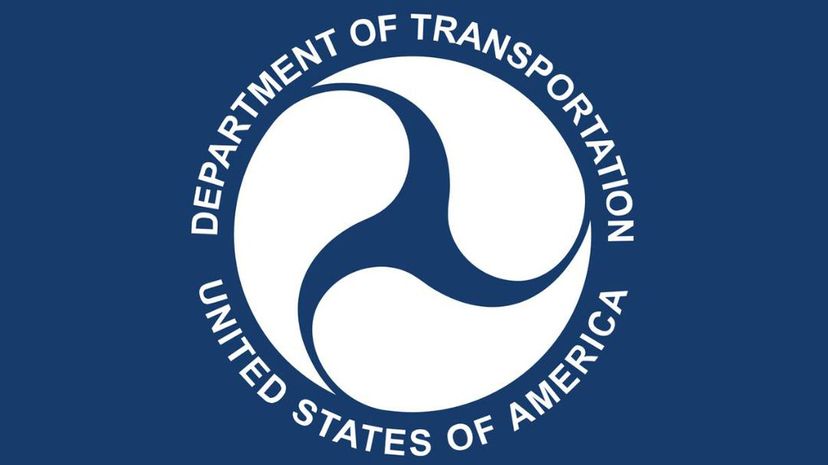
Each year, every commercial motor vehicle weighing more than 10,000 pounds must undergo an examination by a U.S. Department of Transportation inspector or a state police officer. There are different levels of inspection, with Level I being the most demanding.
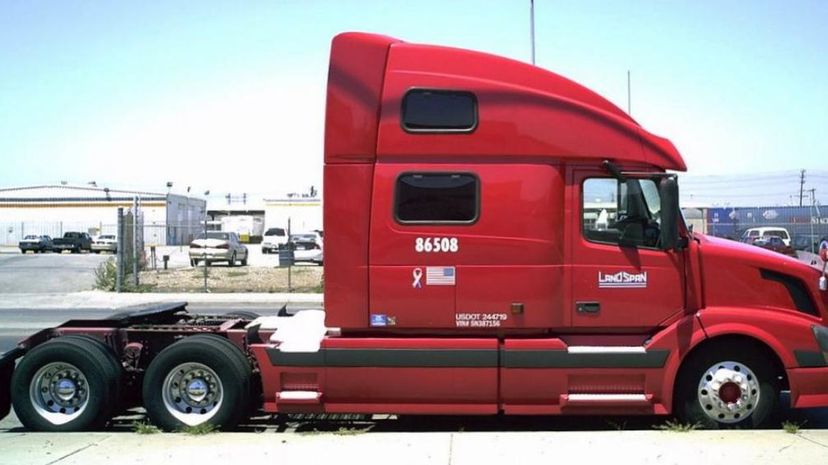
There is no federal limit on the height of a typical semitruck; states set their own limits. Typically, the height limit is lower on the East Coast (usually around 13 feet, 6 inches) than on the West Coast (around 14 feet is typical).
Advertisement

Blue placards on a semitruck mean that the truck is carrying material that becomes hazardous if it gets wet. If the cargo comes in contact with water, it might react explosively or emit a gas. Potassium, calcium carbide, sodium and other potentially volatile materials fall into this category.

In addition to knowledge and skills, people who want a commercial driver's license in the U.S. must pass a medical test to make sure they can operate a heavy vehicle. Certain medical conditions, including diabetes requiring the use of insulin, bilateral hearing loss, certain color blindness and other conditions can prevent you from obtaining a CDL.

The Emergency Response Guide, or ERG, is a book used by truck drivers, cargo loaders, emergency response personnel and others who might have to deal with a hazardous material situation. It is developed and released every four years with input from the United States, Canada, Mexico and Argentina.
Advertisement

When a driver transports hazardous materials, it affects more than just the driver; an accident can harm not only the driver but also surrounding motorists and residents. A Hazardous Materials Endorsement (HME), in addition to the Class 1 CDL, is required before a driver can move dangerous materials.
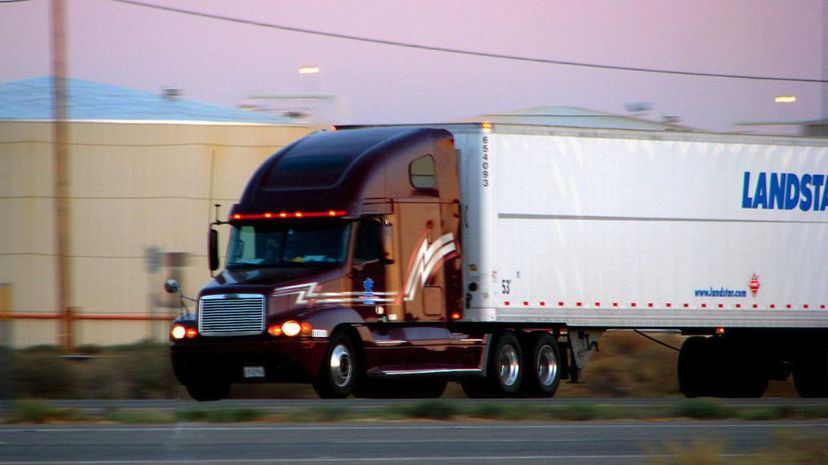
Municipalities can limit truck access to certain roads based on the size of the road and the road's surroundings. Some roads simply weren't made to support the weight of a loaded semitruck.
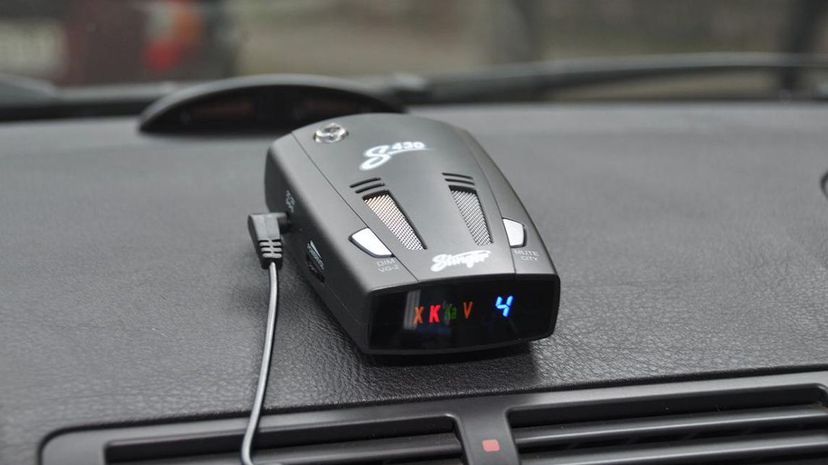
Many municipalities have laws regarding the use of radar detectors, but in 1993, a federal law cleared up the matter for truckers. The devices are banned for interstate truck drivers. Truckers must rely on a CB radio to let them know about police with radars alongside the road.
Advertisement

While it is illegal for drivers of passenger cars in some areas but not in others, it is illegal everywhere for a driver of an 18-wheeler to be using a handheld cellphone while operating his or her vehicle. Distracted driving is bad enough in a car; in a truck, it could quickly lead to a disaster.

Commonly found in mountainous areas, escape lanes (also called runaway truck ramps or truck arrester beds) are areas filled with sand or gravel that allow trucks and other large vehicles with braking problems to come to a stop. Their vehicle might be damaged, but an accident can be avoided if they use this road feature.